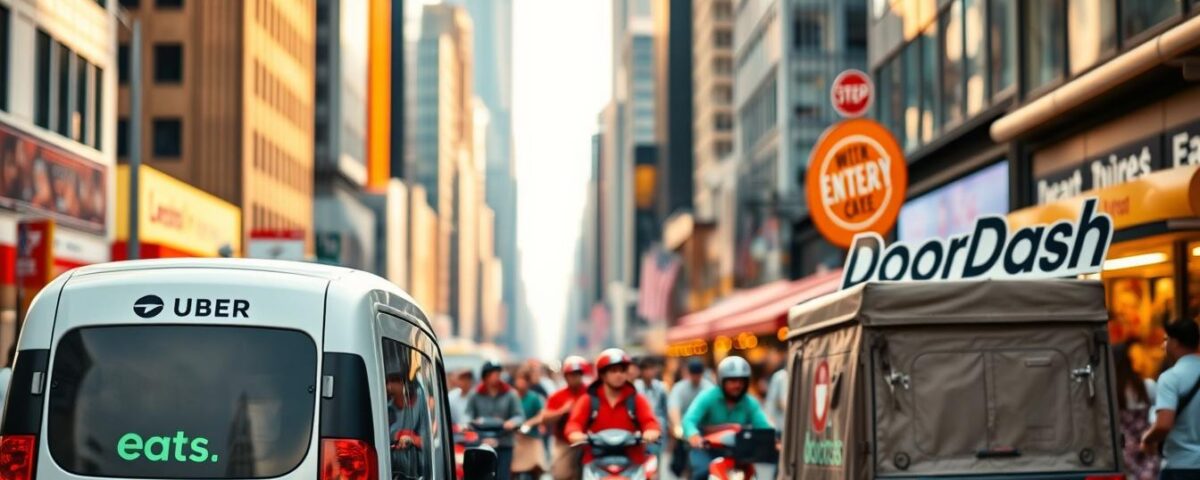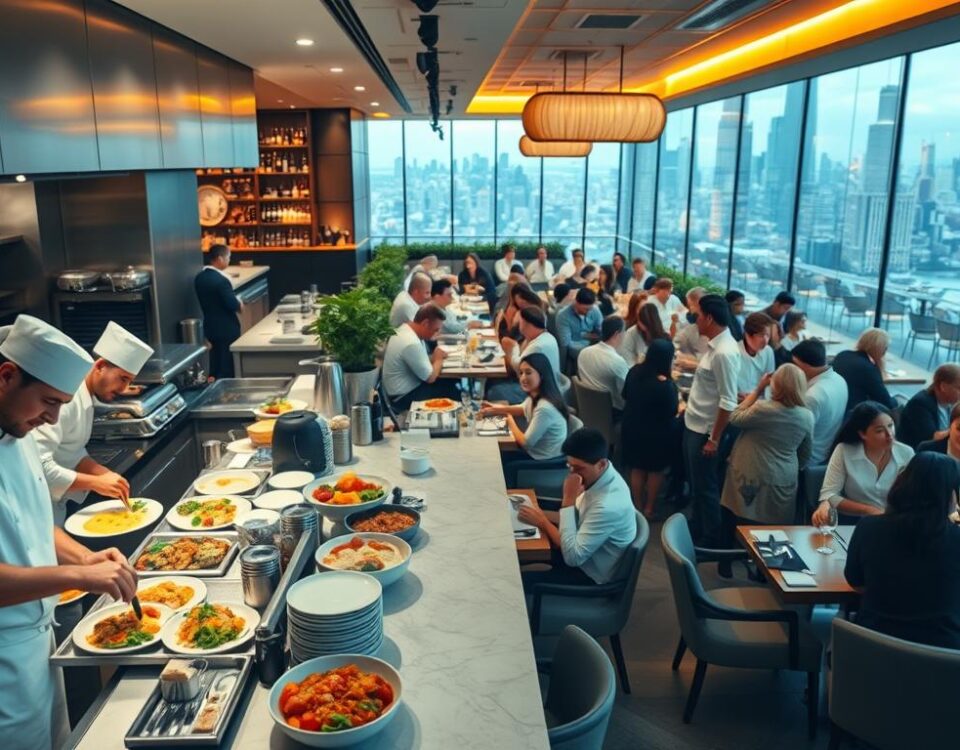
How to Build a Restaurant Management Playbook That Boosts Profit
October 12, 2025As a restaurant owner, I’ve seen firsthand how the wrong delivery platform can drain profits and limit customer reach. With the food delivery market growing rapidly, the stakes are higher than ever. Did you know that the food delivery market is projected to reach $154.34 billion by 2025?
This surge in demand means that choosing the right delivery service is crucial. But, with so many apps and platforms available, it’s easy to make costly mistakes. In this article, I’ll explore the four common mistakes restaurants make when deciding between DoorDash and Uber Eats, and how to make a data-driven decision that boosts profitability and customer satisfaction.
Key Takeaways
- Understand the commission rates and fees associated with each platform
- Evaluate the customer reach and demographics of each service
- Consider the operational efficiency and integration with your restaurant’s systems
- Assess the marketing and promotional support offered by each platform
- Make a data-driven decision based on your restaurant’s specific needs
The Food Delivery Platform Landscape in 2023
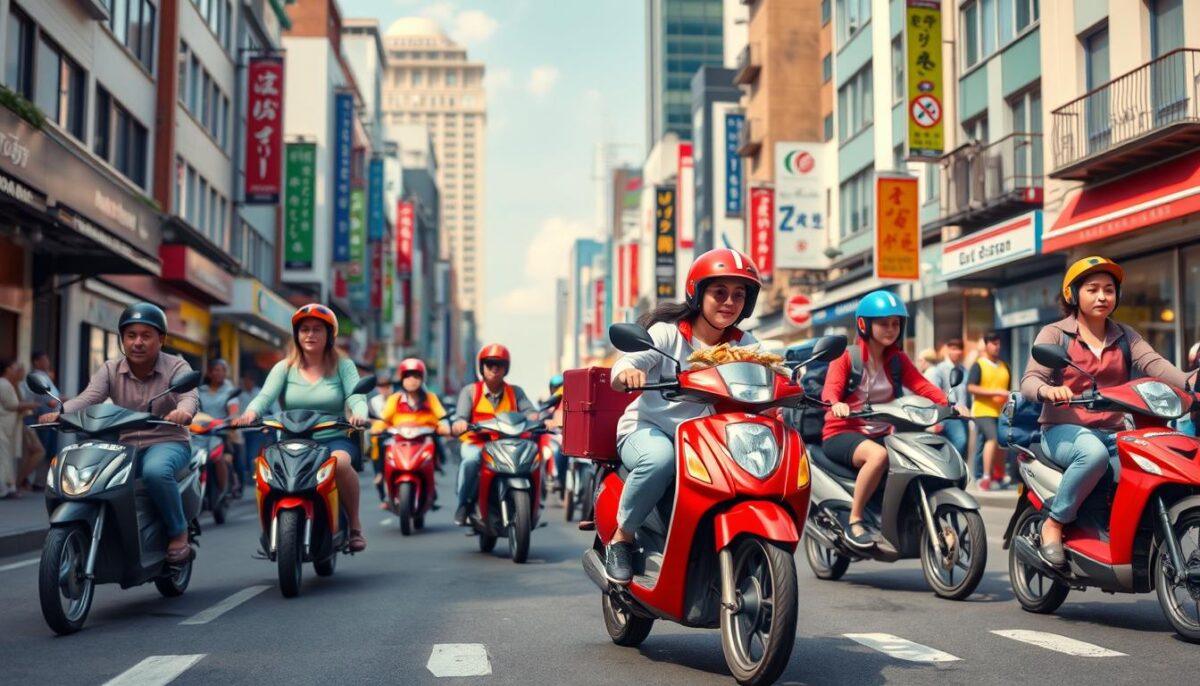
The rise of food delivery platforms has transformed how restaurants reach customers and manage their services. In 2023, the landscape is dominated by a few key players, with DoorDash and Uber Eats leading the charge.
Market Share and Popularity
DoorDash leads the U.S. market with almost 65% share, while Uber Eats follows with around 24%. This dominance is crucial for restaurants deciding which platforms to partner with.
Why Third-Party Delivery Matters for Restaurants
Third-party delivery has become essential for restaurant revenue growth, with many seeing 20-30% of sales from delivery. Key benefits include:
- Access to new customer segments
- Operational benefits from outsourcing delivery logistics
- Valuable data and insights on customer preferences
- Marketing exposure on popular platforms
- Ability to weather seasonal fluctuations and disruptions
- Competitive necessity in markets where others are already offering delivery
- Opportunities to test new menu items with minimal risk
By partnering with the right delivery platforms, restaurants can significantly enhance their services and customer reach.
DoorDash vs Uber Eats: Platform Overview
When deciding between DoorDash and Uber Eats, understanding their core features is crucial. Both platforms offer unique benefits and operational models that can significantly impact a restaurant’s delivery service.
DoorDash: Key Features and Operations
DoorDash is a prominent food delivery platform that connects customers with local restaurants. It offers a range of features, including real-time tracking, customer support, and a user-friendly interface. DoorDash’s operations are designed to streamline the delivery process, making it efficient for both restaurants and customers.
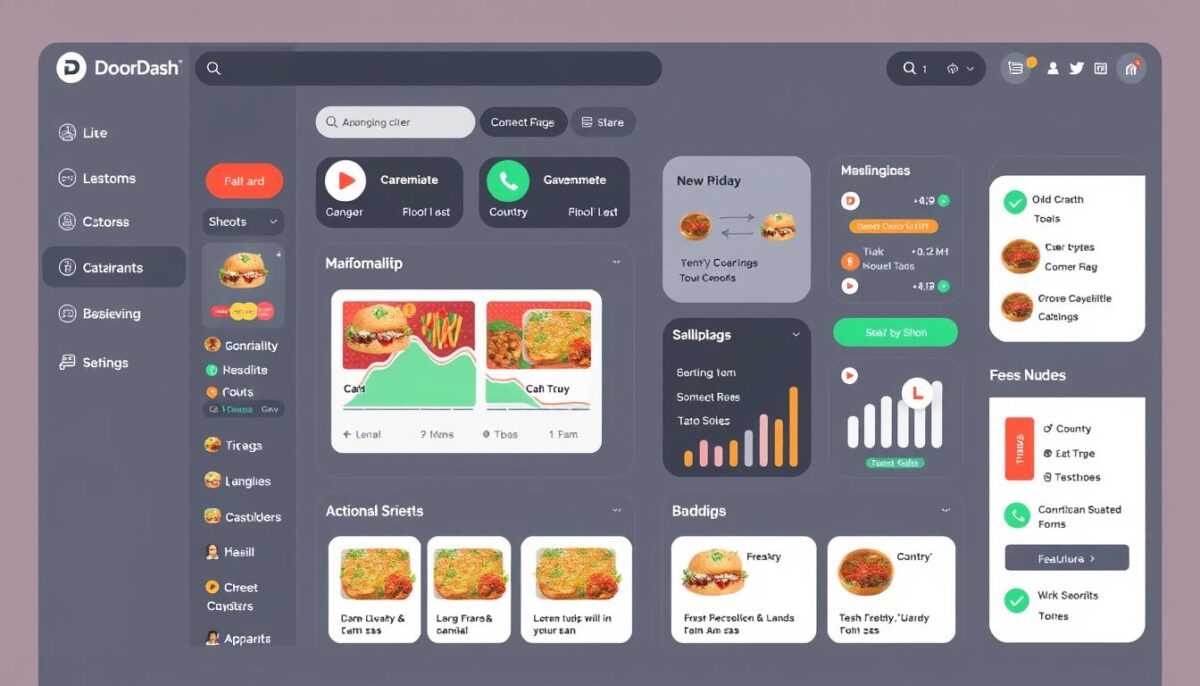
Uber Eats: Key Features and Operations
Uber Eats is a food delivery platform that allows users to order meals from local restaurants through an app or website. It connects customers with couriers who deliver food directly to their door. Uber Eats charges a delivery fee and a service fee to cover operational costs. The platform offers a merchant dashboard with business intelligence tools and marketing opportunities.
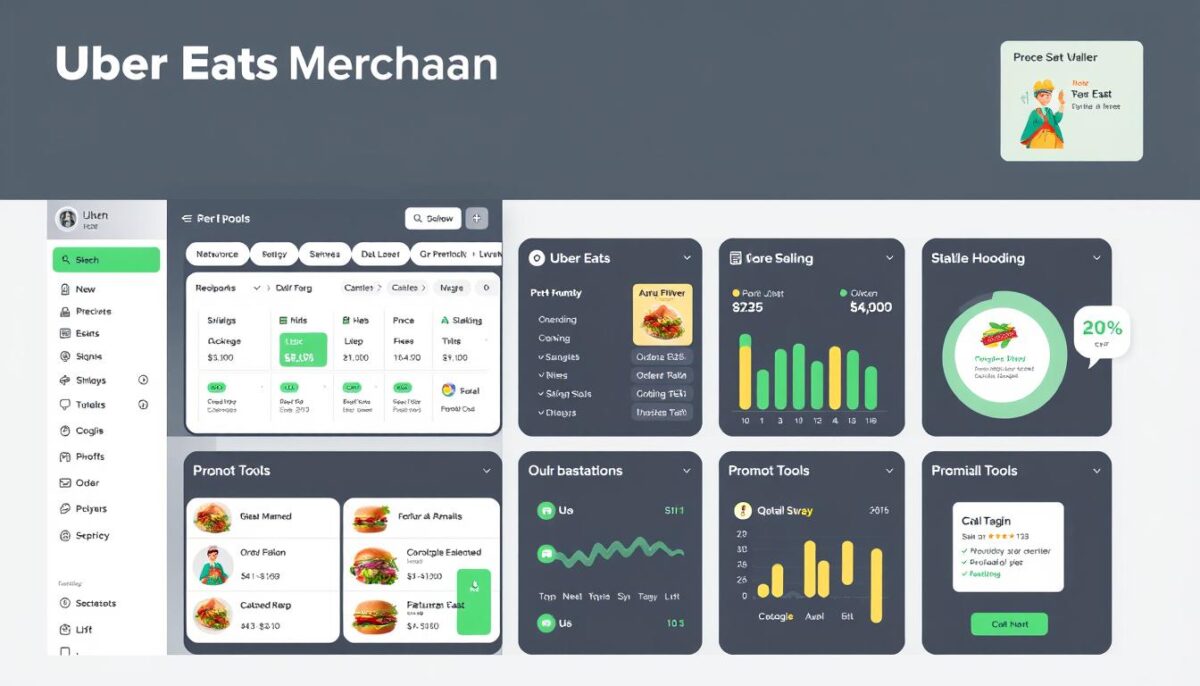
Pricing Structures: How Each Platform Charges Restaurants
Understanding the pricing structures of DoorDash and Uber Eats is crucial for restaurants to make informed decisions. Both platforms charge various fees that can significantly impact a restaurant’s profitability.
DoorDash Commission and Fee Structure
DoorDash charges restaurants a commission fee that typically ranges between 15% to 30% of the order subtotal. This commission fee covers the costs associated with marketing, customer support, and platform maintenance. Additionally, DoorDash charges a delivery fee, which varies based on the distance between the restaurant and the customer.
Uber Eats Commission and Fee Structure
Uber Eats also charges a service fee that can be up to 15% of the order subtotal. Moreover, Uber Eats levies a delivery fee based on the delivery distance. Some restaurants may also incur additional fees for services like payment processing and marketing. Understanding these fees is essential to calculating the total cost of using Uber Eats.
By comparing the fee structures of both platforms, restaurants can make a more informed decision about which platform best suits their business needs.
Mistake #1: Focusing Only on Commission Rates
In the DoorDash vs Uber Eats debate, commission rates are just the tip of the iceberg for restaurants. While initial commission rates are important, they often change over time, and other factors can significantly impact a restaurant’s bottom line.
Hidden Costs Beyond Commission Percentages
Beyond the visible commission rates, both DoorDash and Uber Eats charge additional fees that can add up. These may include delivery fees, service fees, and payment processing fees. For instance, DoorDash charges a delivery fee that varies by location, while Uber Eats has a service fee that can range from 10% to 15% of the order subtotal.
Long-Term Financial Impact Considerations
When evaluating the long-term financial impact, consider factors such as customer retention rates, order frequency, and average order value. For example, a platform with higher customer retention rates can lead to more repeat business and higher lifetime value. Here’s a breakdown of key considerations:
- How initial commission rates change over time and what triggers these changes
- The long-term impact of exclusive vs. non-exclusive platform partnerships on negotiating power
- Customer retention rates and their effect on lifetime value
- Variations in order frequency and average order value between platforms
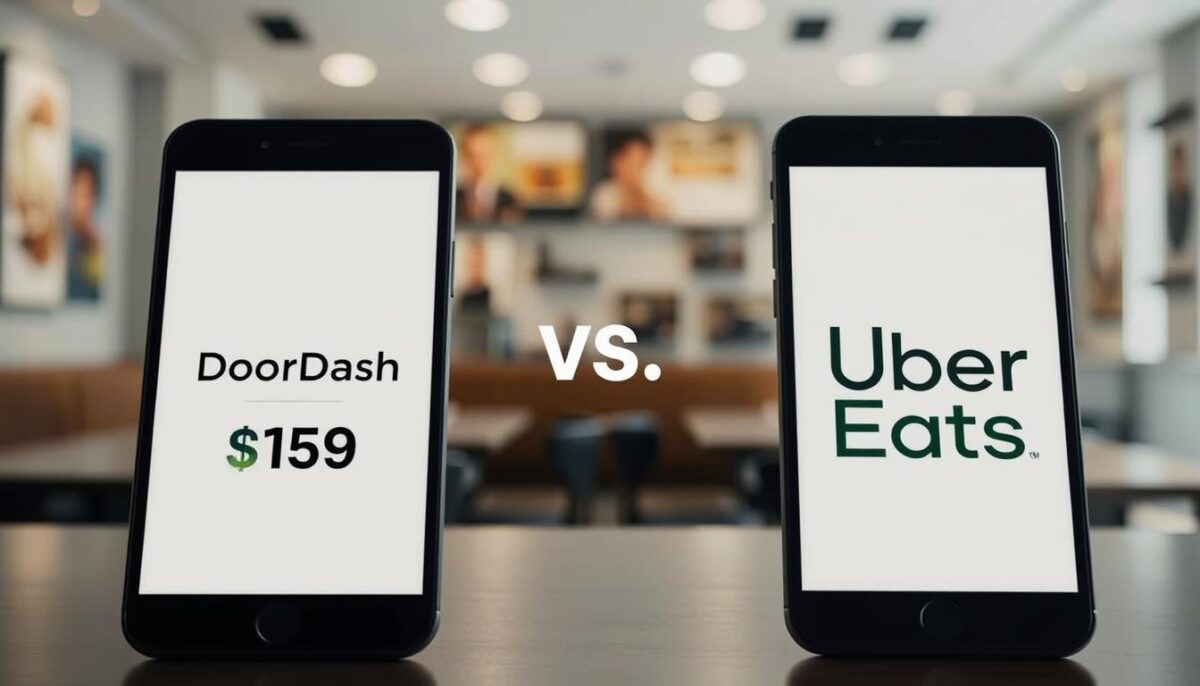
Mistake #2: Ignoring Customer Demographics and Reach
Restaurants frequently make a significant mistake by ignoring the differences in customer demographics and market coverage between DoorDash and Uber Eats. Understanding these differences is crucial for maximizing delivery service potential.
Platform User Differences and Demographics
DoorDash and Uber Eats have distinct user demographics that can significantly impact a restaurant’s customer base. For instance, DoorDash tends to have a stronger presence in suburban and rural areas, while Uber Eats excels in dense urban centers due to its integration with the Uber rideshare network.
Market Coverage and Geographic Considerations
The geographic coverage of these platforms varies, affecting delivery times and customer acquisition potential. DoorDash is often more reliable outside dense urban areas, while Uber Eats leverages its rideshare network for better coverage in cities.
| Platform | Urban Coverage | Suburban/Rural Coverage | Delivery Time |
|---|---|---|---|
| DoorDash | Strong | Very Strong | Average: 45 minutes |
| Uber Eats | Very Strong | Strong | Average: 40 minutes |
By understanding these differences, restaurants can make informed decisions about which platform to use, potentially increasing their customer base and improving delivery times.
Mistake #3: Not Evaluating Restaurant Support Services
When choosing between DoorDash and Uber Eats, restaurants often overlook a crucial factor: the level of support services provided by each platform. Effective restaurant support is vital for resolving issues, managing orders, and ensuring a smooth delivery experience.
DoorDash’s Restaurant Support Offerings
DoorDash provides a comprehensive support system for its restaurant partners, including dedicated customer service representatives, online resources, and a robust onboarding process. DoorDash’s support infrastructure is designed to help restaurants manage their delivery operations efficiently.
Uber Eats’ Restaurant Support Offerings
Uber Eats’ support for restaurants is somewhat limited, with a greater reliance on automated systems. As one merchant noted, “UberEats looks more like a solution on autopilot mode than reaching humans at the support end.” This can lead to frustration when dealing with complex issues or order discrepancies. Uber Eats does offer some support tools, including driver management and order tracking, but the overall support experience is not as robust as DoorDash.
| Support Feature | DoorDash | Uber Eats |
|---|---|---|
| Dedicated Customer Service | Yes | Limited |
| Onboarding Process | Comprehensive | Standard |
| Driver Management | Robust Tools | Basic Tools |
Ultimately, the quality of support services can significantly impact a restaurant’s experience with a food delivery platform. By carefully evaluating these services, restaurants can make a more informed decision when choosing between DoorDash and Uber Eats.
Mistake #4: Failing to Consider Driver Experience and Delivery Quality
Failing to consider driver experience and delivery quality can significantly impact a restaurant’s reputation on food delivery platforms. The efficiency and reliability of delivery services are crucial for customer satisfaction.
How Driver Pay Affects Your Restaurant’s Delivery Experience
Driver pay is a critical factor that influences the quality of delivery. Platforms like DoorDash and Uber Eats that offer higher earnings to their drivers tend to have more reliable and timely deliveries. For instance, drivers who earn more per hour are generally more motivated to provide better service.
Delivery Speed and Reliability Comparisons
Delivery speed and reliability vary between DoorDash and Uber Eats due to several factors, including driver availability, traffic conditions, and the distance between restaurants and delivery locations. Here are some key comparisons:
- Average delivery times differ across market types, with some platforms performing better in urban areas.
- On-time delivery performance metrics reveal the reliability of each platform.
- The driver assignment algorithm affects pickup timing and efficiency.
By understanding these factors, restaurants can make informed decisions about which platform best suits their needs. 
Making the Right Choice: DoorDash vs Uber Eats Delivery

To maximize your restaurant’s delivery potential, understanding the differences between DoorDash and Uber Eats is essential. Both platforms have unique strengths that cater to different types of restaurants and business needs.
When DoorDash Makes More Sense
DoorDash is often the better choice for restaurants that require more flexible integration with their existing systems. It offers a broader range of restaurant support services, which can be beneficial for businesses with complex operational needs. Additionally, DoorDash’s wider market coverage can help restaurants reach a larger customer base.
When Uber Eats Is the Better Option
Uber Eats is typically more suitable for urban restaurants with higher-end offerings, as it attracts a demographic willing to pay premium prices for quality food. Restaurants targeting younger, tech-savvy customers also tend to perform better on Uber Eats due to its user-friendly interface and seamless integration with the Uber app. Furthermore, restaurants in areas with a strong Uber rideshare presence may find Uber Eats to be a more effective delivery platform for their needs.
Conclusion: Beyond the Platform Wars
As the food delivery market continues to grow, restaurants need to carefully consider their options between DoorDash and Uber Eats to maximize their earnings. While both platforms offer significant opportunities, they cater to different needs and customer bases.
To make the most of these food delivery services, restaurants should consider leveraging both platforms strategically. For instance, using DoorDash for lunch services and Uber Eats for dinner promotions can help capture a broader customer base. Regularly re-evaluating platform performance and adjusting strategies accordingly is also crucial.
By understanding the strengths and weaknesses of each platform, restaurants can negotiate better terms and maximize their profitability. As the delivery landscape evolves, staying informed and adaptable will be key to success.
FAQ
How do I get paid as a driver on Uber Eats?
As an Uber Eats driver, you can earn money by completing food delivery requests. Your earnings are deposited into your bank account on a weekly basis, and you can track your earnings through the Uber Eats driver app.
What are the service fees for restaurants on DoorDash?
DoorDash charges restaurants a commission fee ranging from 10% to 30% of the order total, depending on the type of partnership and the restaurant’s sales volume.
Can I use both Uber Eats and DoorDash as a driver?
Yes, many drivers choose to work with multiple food delivery platforms, including Uber Eats and DoorDash, to maximize their earnings and delivery opportunities.
How do tips and promotions affect my earnings as a driver?
As a driver, you can earn additional money through tips and promotions offered by customers and the food delivery platforms. These can significantly boost your overall earnings.
What kind of customer service support is available for restaurants on these platforms?
Both Uber Eats and DoorDash offer customer service support to restaurants, including help with orders, delivery issues, and other concerns.
How do I track my earnings and orders on these platforms?
You can track your earnings and orders through the driver apps provided by Uber Eats and DoorDash, which offer real-time updates and detailed order information.
